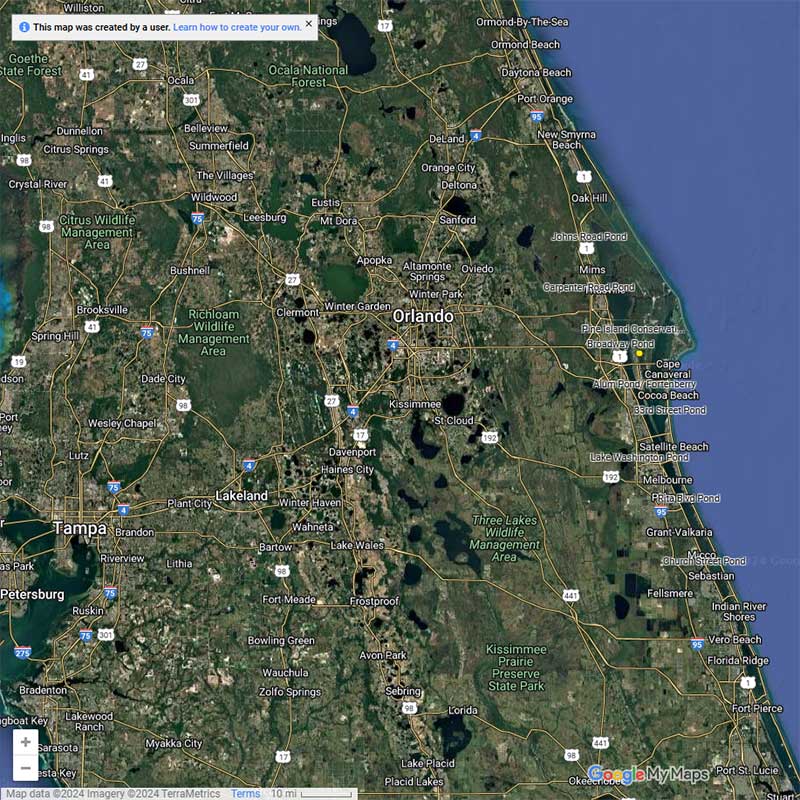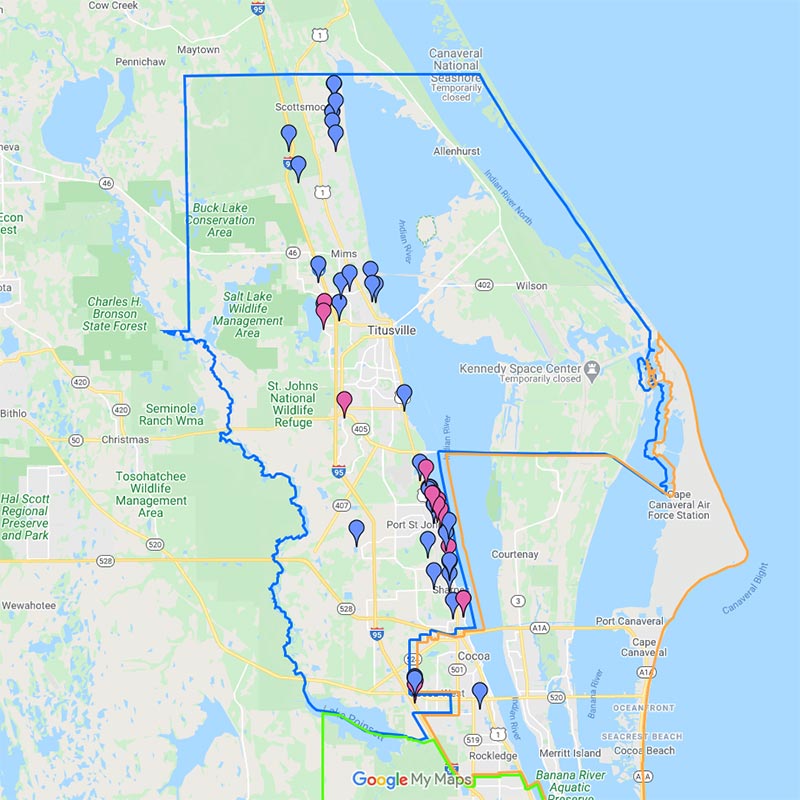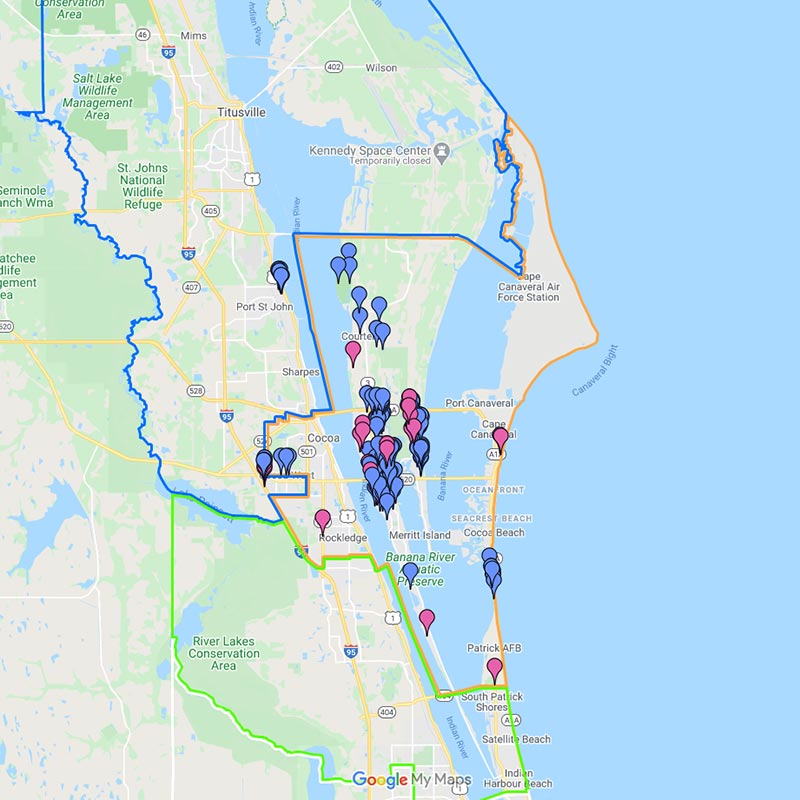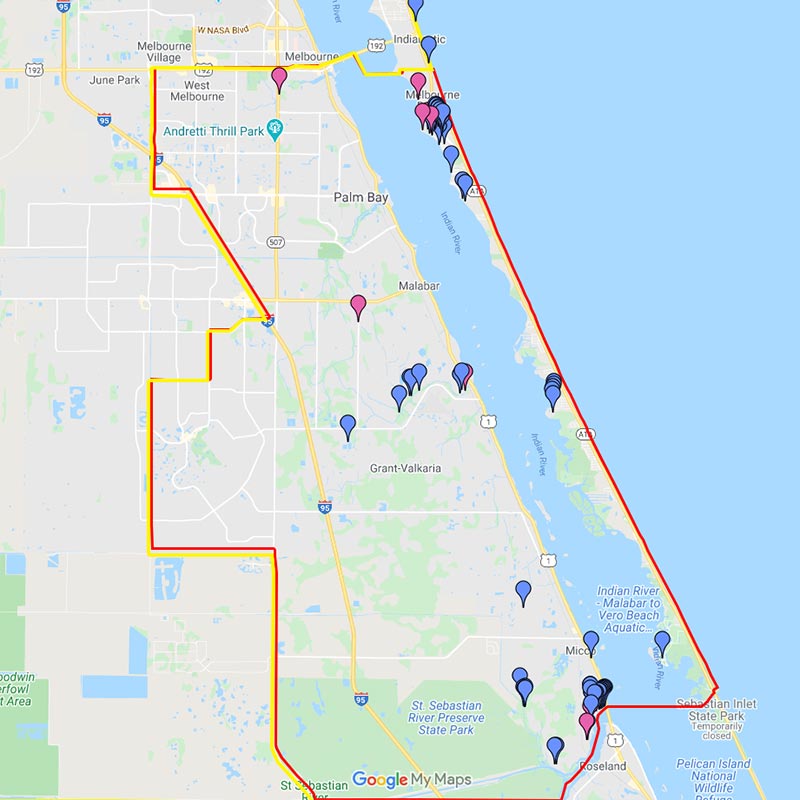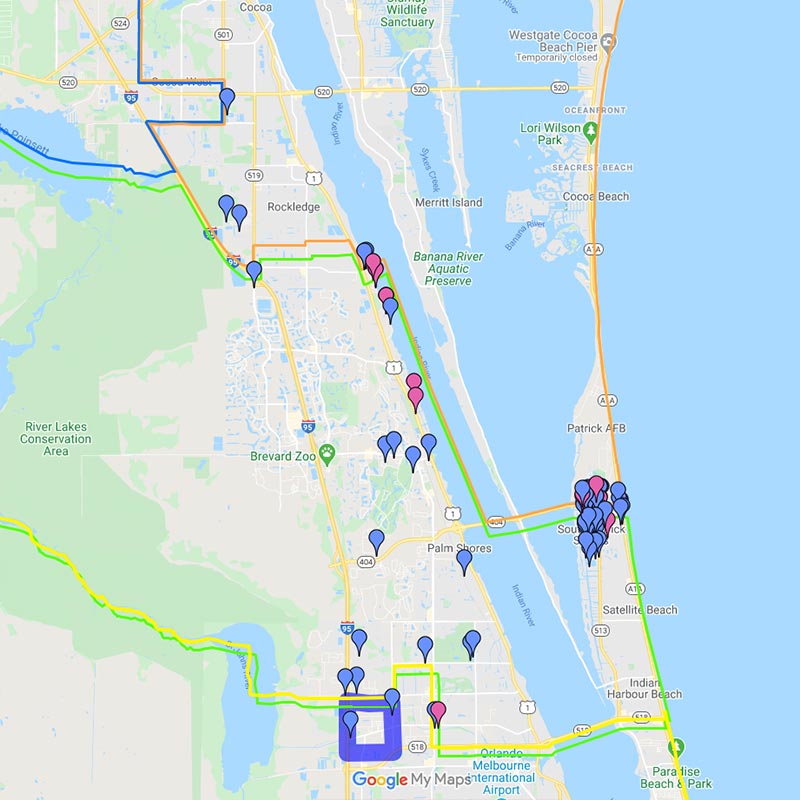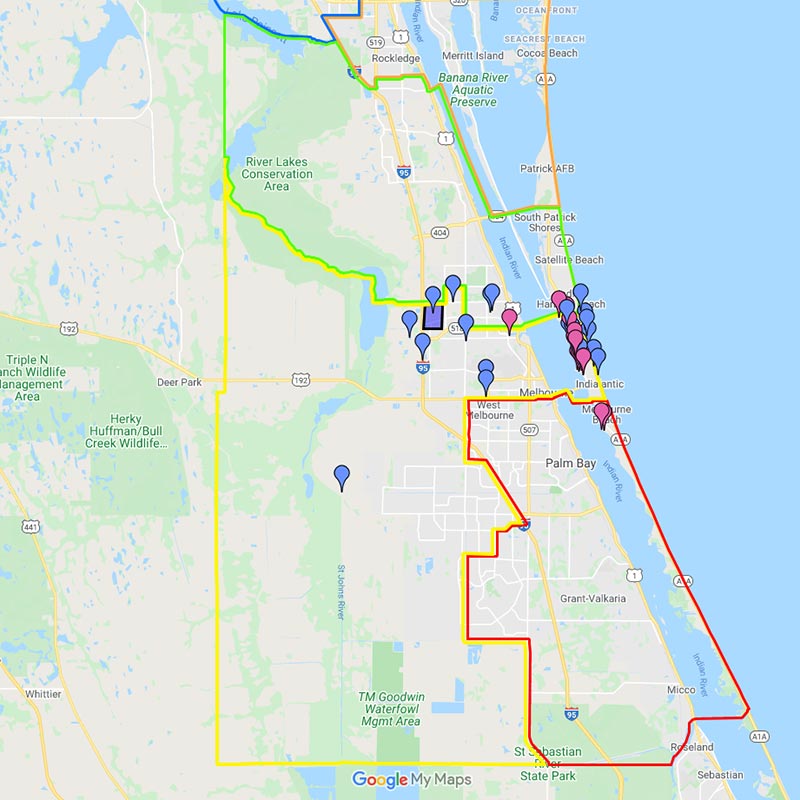Watershed Management Construction Projects
Watershed management construction projects, projects by district, and specific project types.
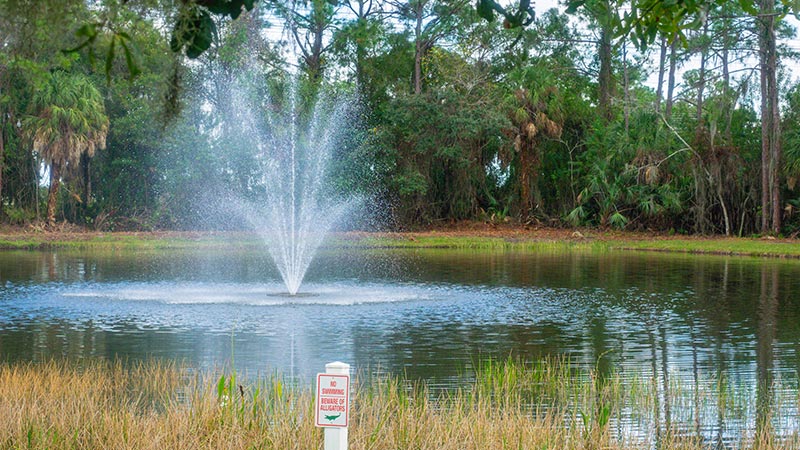
Wet Detention Ponds
Wet detention ponds are an effective way to battle pollution caused by stormwater runoff. The ponds slow down the fast water flow out of the pipes and allow time for some of the nutrients to settle out of the water. In each pond, there are control structures that control the discharge of cleaner water into the Lagoon or St. Johns River once the water level reaches a certain elevation. The ponds also help alleviate flooding.
You may not have "waterfront" property, but the wet retention pond in your neighborhood is designed to capture all the run-off from your roof, lawn and driveway. Eventually the water in the pond will release to local waterbodies. By following the eight steps listed below, you can help prevent pollution of our precious Indian River Lagoon and St. Johns River.
1. Easy on the pesticides and herbicides. Please don't over spray your lawn and garden with pesticides and herbicides since they may be toxic to wildlife and may contaminate local waterbodies. Use them sparingly and strictly according to label directions. Seek nontoxic alternatives, and pull weeds by hand.
2. Use chemical fertilizers sparingly. Please don't overuse fertilizers especially near the water's edge. Rain and lawn irrigation wash the excess fertilizer into the pond causing nutrient pollution which contributes to the overgrowth of algae.
3. Please don't throw grass clippings into ponds or storm drains. Use your clippings for mulch or compost or, if you aren't planning to use them, put them in trash. Organic materials decay in water and are a source for nutrient pollution.
4. Plant, don't pave. Ground cover minimizes runoff and is prettier than concrete. Consider converting lawns adjacent to ponds to native vegetation which act as a buffer to control runoff and erosion. Plants native to the area should be used for landscaping since they have reduced needs for fertilizers and pesticides.
5. Redirect rain runoff from roofs, patios and driveways. Minimize flow by directing runoff to grassed areas or swales where in can infiltrate through soil and recharge groundwater levels. Consider using a rain barrel to collect rain water from your roof.
6. Watering the driveway won't make it grow. Save the hose for gardening, not sweeping. Wash your car on the lawn (and easy on the soap) which will help filter out detergetnts. Use biodegradable detergents with little or no phosphate.
7. Storm drains are only for rain water. Never pour used motor oil, leaves, lawn clippings, pet waste or other waste material into storm sewers. Motor oil is extremely toxic to wildlife. Drop used oil off at a recycle center. Pick up after your pet, and put the waste in the trash.
8. Educate your neighbors. Pass along the guidelines to your neighbors and discuss the importance of keeping pollutants out of local waterbodies. Better water quality begins with you! Working together, you and your neighbors can maintain your stormwater pond to improve water quality, provide valuable wildlife habitat and an attractive environment for the community.
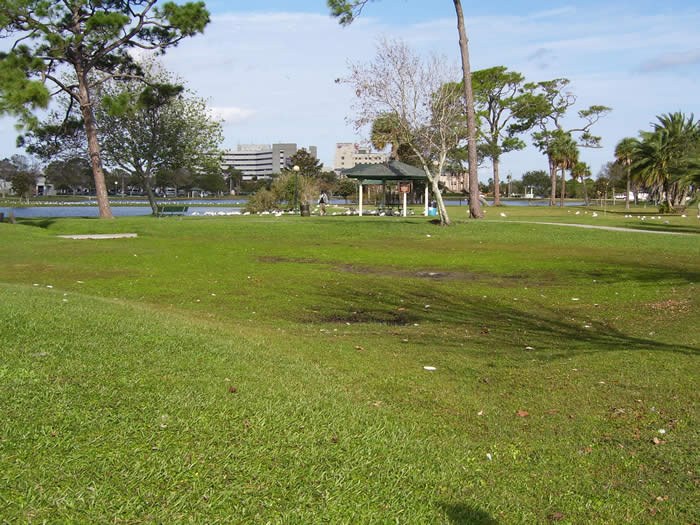
Dry Retention Ponds
Dry retention ponds can be used to both alleviate flooding and treat stormwater runoff.
Dry retention ponds also temporarily store runoff and allow the water to slowly percolate into the ground over several days, filtering out pollutants before reaching our groundwater.
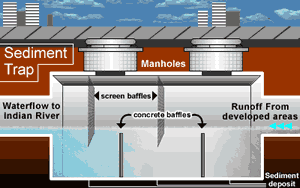
Baffle Boxes
Baffle boxes are square chambers connected to a storm drain with partitions dividing the box into sections.
Water flows into the first section of the box where most pollutants settle out of the water. As water rises above the next partition, it overflows into the second section to allow further settling of pollutants.
After detention in multiple chambers in which varying levels of pollutants have been trapped, water overflows the baffle box into the stormwater pipe.
Most baffle boxes are buried in-line with the storm drain system, leaving only manhole covers visible from the ground surface. Manholes provide access for regular maintenance.
Brevard County Road & Bridge Department uses a vac-truck to clean out the baffle boxes.

Inlet Screens
Inlets are the curbside and grate drains seen in roads.
When it rains, the water goes down those drains and runs downhill to the lagoon or the river. These drainage systems do little to treat the water, but they do prevent your streets from getting flooded.
In some cases, inlet screens or other devices have been inserted to trap leaves, trash and some dirt, thereby reducing the amount of pollutants that reach the lagoon or river.
Inlet screens are routinely cleaned out by Brevard County staff.
However, these systems can be easily overwhelmed or lose their effectiveness if inundated by yard wastes. Lawn clippings should be mulched or bagged and disposed of properly with other yard wastes.
Pictured at left is a photo of an extremely full basket in an inlet screen drain. When the drain becomes clogged with trash and lawn debris as shown, rain may begin to pond in yards, rather than drain.
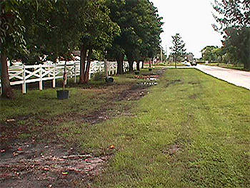
Swales
Swales are one of the most commonly used stormwater management practices. They slow down the rapid flow of stormwater runoff from highways and residential streets by ponding the water between two sloping sides.
By letting the ponded water soak into the ground, swales reduce the volume of pollutants thereby improving the quality of the stormwater that reaches the river or the lagoon. Swales have been created along roadsides throughout the County.
The following are ways to maintain swales to maximize their effectiveness:
- Let water pond. Runoff should temporarily pond in the swale for 24 to 36 hours.
- Mow the swale, but not too short.
- Remove leaves and grass clippings from swales.
- Minimize use of fertilizers, pesticides, and herbicides in swales and adjacent areas.
- Do not pile garbage, trash, leaves, tree limbs or garden debris in swales as this adds pollutants that can wash into downstream waters.
- Do not pave the swale as this will reduce the filtration and infiltration of runoff.
- Do not park vehicles in the swale, as this compacts the soil, reducing infiltration and increasing runoff.
